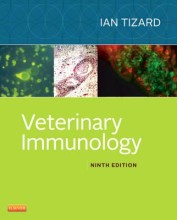Physiology of C3 and C4 plants
24 important questions on Physiology of C3 and C4 plants
What are the most important photosynthesis reactions?
- 'Dark reaction'
What happens in the light reaction?
- Electron transport
- Light harvest by PSI
What happens in the 'dark' reaciton?
- Higher grades + faster learning
- Never study anything twice
- 100% sure, 100% understanding
What does excist in C3 species?
Why is C4 afvantageous?
- Initial carbocylation occurs in mesophyll cells, convreting HC03- into C4 acids by phospoenolpyruvate carboxylase
- C4 acids are decarboxylated in bundle sheath cells into CO2 which will be re-carboxylated but by rubisco
To what is a typical humble solar energy conversion efficiency (ca 1%) by annual crops mainly due to?
- incomplete energy interception during both estabishment and senescence periods
- loss during conversion to, and maintenance of, biomass
What happens during the light independent reactions (calvin cycle)?
- Electrons and hydrogen delivered by NADPH, powered by ATP.
- Carbon dioxide, H+ and electrons are rearranged in to glucose with high energy bonds
What do different wavelengths of light do?
What happens with a shorter wavelength?
What happens when sunlight hits the plant?
What is the major photsynthetic pigment?
What are diffrences between phyotsytem 1 and 2?
What happens during the non-cyclic pathway?
What is the source of electrons in p680?
What are the two sources of H+?
The splitting of water
What are the costs of using the stomata?
How do plants reduce water loss?
What happens when the stomata close?
What is the C4 pathway?
What happens in the C4 pathway?
What is the CAM pathway?
- During the night CO2 is collected
- During the daytime photosynthesis is happening
Where does phyotosynthesis take place?
How can you pass the barriers?
- Chloroplast envelope
Why is leaf nitrogen important?
The question on the page originate from the summary of the following study material:
- A unique study and practice tool
- Never study anything twice again
- Get the grades you hope for
- 100% sure, 100% understanding




























